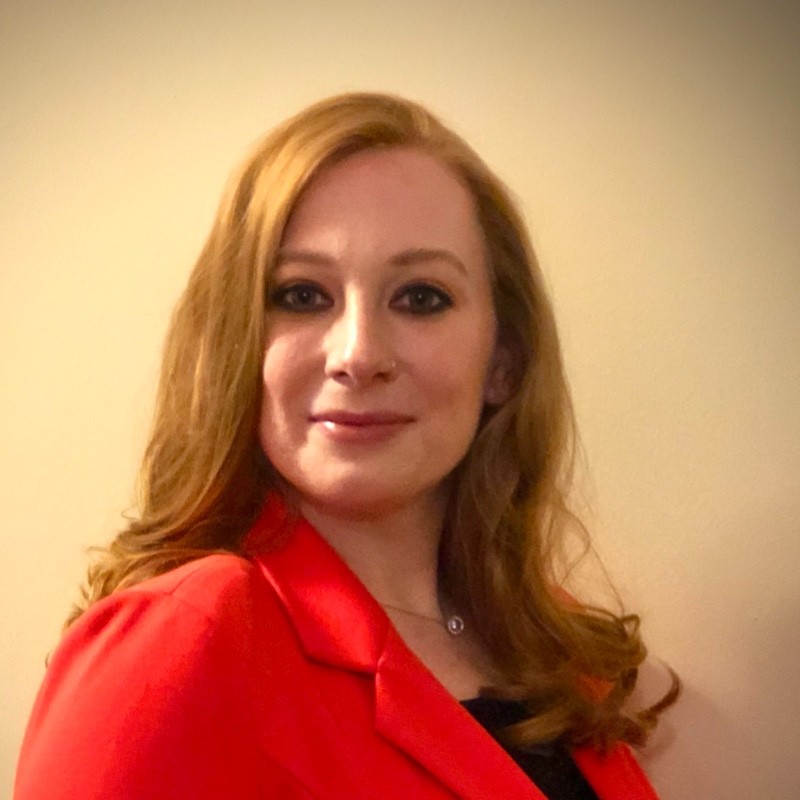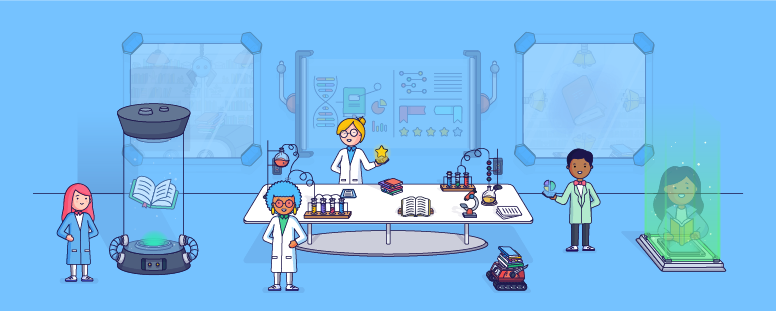Why We Should Look to Silver Linings to Move Us Forward This School Year
Christophe Spy/ July 29, 2021/ 21-22 SY, Back to School/ 0 comments
The monumental task of catching student learning back up to pre-pandemic proficiency levels is number one on teacher to-do lists. Throughout the Covid-19 shutdown, educational stakeholders worked tirelessly to meet the expanding social and emotional needs of students, families, and each other.
As we all prepare to return to entirely in-person learning, nearly one and a half years after initial closures, finding and following the silver linings from pandemic-era education are more vital than ever.
A Pandemic’s Relentless Impact on Education
Covid-19 has made an impression on education in unprecedented ways. In collaboration with the Department of Education, the Office for Civil Rights put together a study from widely available documentation reflecting on “Education in a Pandemic: The Disparate Impacts of Covid-19 on America’s Students”.
From negatively affecting overall academic growth to widening disparities in historically ignored populations, such as those representing people of color, English language learners, low socio-economic status households, people with disabilities, and GLBTQ+ communities, the pandemic has created inequitable impacts on educational outcomes at more significant proportions than pre-pandemic times.

Almost all of the statistics debilitating underserved communities predated the pandemic. However, now that it is so widely seen and felt and directly documented, it has become impossible to ignore the disparity between services provided between the different communities, especially services in education.
It can be easy to focus on the traumatic sides of the shutdown. The education field has suffered so many stepbacks as they pushed through the transitions brought on by Covid-19. However, the best way to move forward is to acknowledge our shared experiences’ realness and find the bright spots, or silver linings, to guide us into the post-pandemic, new normal of teaching and learning.
Silver Linings
In 1634, John Milton used the phrase ‘Silver Lining’ in his epic poem Comus: A Mask Presented at Ludlow Castle (find an analysis of the 1023 lined epic play-Esque poem in the Glose Library!). ‘Mirriam-Webster has since defined silver lining’ to mean ‘a consoling or hopeful prospect:
I see ye visibly and now believe
That he, the Supreme Good, to whom all things ill
Are but as slavish officers of vengeance,
Would send a glistering guardian, if need were
To keep my life and honor unassailed.
Was I deceived, or did a sable cloud
Turn forth her silver lining on the night?
I did not err; there does a sable cloud
Turn forth her silver lining on the night,
And casts a gleam over this tufted grove.
(Lady, lines 216-225)
In the case of Milton’s poem, the ‘silver lining’ is referring to the dark cloud’s outline being illuminated by either sun or moonshine and creating a juxtaposition for the speaker and the reader. When thinking of the worldwide pandemic caused by the outbreak of Covid-19, there are many outlying examples of optimistic opportunity shining around the tragic and bleak scenarios we found ourselves experiencing.
Though there were many struggles, there were also several leads in innovative, accessible, and empowering teaching and learning practices. In many instances, schools had a ‘green light to create novel solutions for unparalleled learning scenarios. These solutions have turned into silver linings, as they were beneficial in providing learners with improved access to resources, many of which were previously unconsidered.
5 Silver Linings from Pandemic-Era Education
It will cause undue harm to ourselves, students, and the future of education if we ignore the silver linings brought about by the pandemic. So many choices made in a hurry have become effective, those that seemed risky are now necessary, and even more that were unheard of are now reliable forms of teaching and learning.

The instructional decisions we made have kept our heads above the water and opened new avenues for students to thrive. Although data shows that many communities felt a widened gap in educational access, several newly adopted teaching strategies led to increased educational opportunities and experiences for students. Unfortunately, we can’t afford to throw out these silver lining practices when students return to the building.
The following top 5 silver linings in education need to stay consistent to move us forward this school year:
- Trying Out and Loving Edtech Tools: Edtech tools were front-and-center when districts thought through processes for home-based learning. Many of these tools had been around before the pandemic. Still, they adapted to meet the growing needs of teachers and students: monitoring systems through dashboards, collaborative learning groups with standard classroom feeds, self-paced curriculum and tasks and assessments, and school-to-home communication tools. Edtech tools invested students in the learning process by making learning more modern and enjoyable.
- Accessibility of Internet and Tech Access: School districts quickly deployed technological devices for students and families in need. Many families did not have access to reliable internet or a computer, laptop, or tablet within their homes, leading many students to not participate in lessons. As schools provided students with the internet and technology to engage in classes, student participation and attendance improved. Schools should continue to provide at-home access to these essential resources to continue developing their learning even when they are at home.
- Amplifying Student Social Voice: The pandemic brought about heightened stress and mental anguish due to the isolation of individuals and the lack of several support systems for students. Also, during this time, social climate discussions and actions around equity, race relations, and the political environment continued to dominate the news, and social media feeds. Through books, project-based learning, and writing prompts, students and teachers, practiced harnessing and elevating student voice and choice within the classroom.
- Building Stronger Relationships Between Staff Members: Teachers, administration, and school support staff had to lean on each other to get through the tough times. As teachers grasped new teaching methods and improved student engagement, the rest of the school community stood up and out to support each other. With little professional development to launch the shift into remote learning, school staff members had to have patience and a growth mindset as they forged the way forward, stronger together.
- Implementing Teacher Coaching Models: Many staff required one-on-one coaching to ensure they had the needed pedagogical skills to teach remotely. Between providing support through troubleshooting with tech, increasing student engagement, or planning out and facilitating standards-aligned rigorous lessons, teachers turned to more experienced team members to troubleshoot concerns together. These coaching models provided needed assistance and created a culture of coaching within school buildings, which teachers should rely on next year.
Continuation Makes Sense
Researchers are looking at the effects of the pandemic from every conceivable educational angle: social, emotional, economic, and historical. Every day new data is coming through to explain the long-term impacts the shutdown will have on students and their futures. As we continue to move forward, we must keep up the innovative and forward-thinking decisions that schools made during the pandemic.
Where the cloud of the pandemic hovered over us, the illumination of hope has shown us new ways of teaching and learning that only make sense to continue in person. Schools and districts that stay on the forefront by finding and following through with the silver linings will be better prepared to meet students where they are academically, socially, and emotionally as they reenter our buildings this new school year.
Glose for Education offers a collaborative and personalized digital reading platform for use in classrooms, schools, libraries, and at home. Offering access to more than one million ebooks and 1000s of Audiobooks, Glose for Education fosters a social, fun, and engaging reading experience. Drawing on the familiarity and benefits of safe social networking, the platform empowers students to read and comprehend both on their own and with their peers. They can read, discover, annotate and share text with other students. For instance, students can provide responses to reading passages with emojis, highlight their favorite parts, and pose questions to their peers and teachers.
Educators can create virtual book clubs and leveled reading groups, provide an engaging, adaptive reading experience with writing prompts and discussion starters, and see precisely how each student is interacting with the text. With access to real-time, meaningful data, school leaders can make informed decisions while creating a curated digital library that their students can access anytime, anywhere.
Glose for Education is available on iOS, Android, and the web, while also allowing for offline usage in order to ensure equitable access for all.

About the Author
Samantha Reichard serves as Lead Real Time Teacher Coach for Center City 1 Learning Community in Charlotte, NC, serving as a mission-critical resource for 29 inner-city and Title I schools in the Charlotte Mecklenburg School District. After graduating from the State University of New York at Fredonia, Samantha began her teaching career at East Union Middle School in Union County, NC as an eighth-grade English language arts teacher. After two years, she moved to Charlotte, NC and served as a sixth- and seventh-grade language arts teacher for five years before becoming a multi-classroom leader and real-time teacher coach. Following that, she worked on expanding the model of Multi-Classroom Leader and Real-Time Teacher Coaching (RTTC) for four years at Ranson IB Middle School.

Integrating Learner Agency
Learner agency happens when students take active command of their learning through deliberate participation in their classroom communities.

Meaningful Engagement With Texts Through Close Reading
Through close reading, written works are examined multiple times for deeper understanding as learners naturally progress into higher levels of knowledge and cognitive processing.

Building Literacy-Rich Environments
Literacy-rich environments focus on students being actively and meaningfully engaged in reading, writing, speaking, and listening with consideration of both digital and written formats.

Glose for Education Announces New Integration with Microsoft Teams
Glose for Education Announces New Integration with Microsoft Teams
